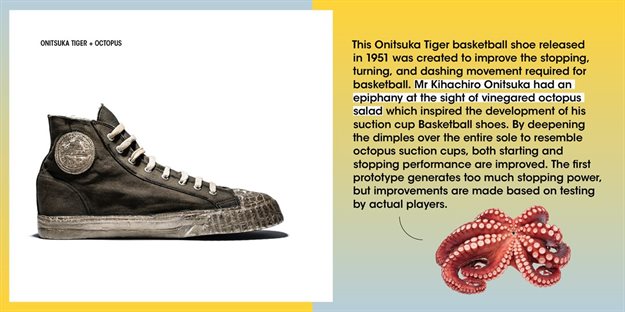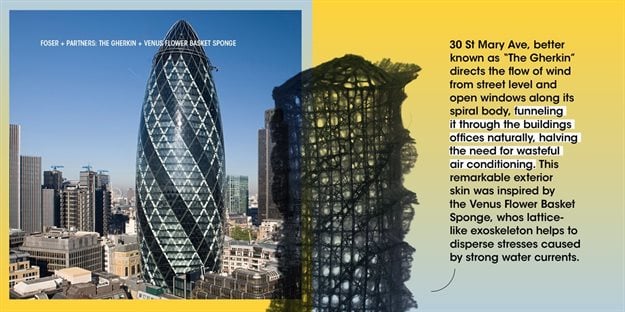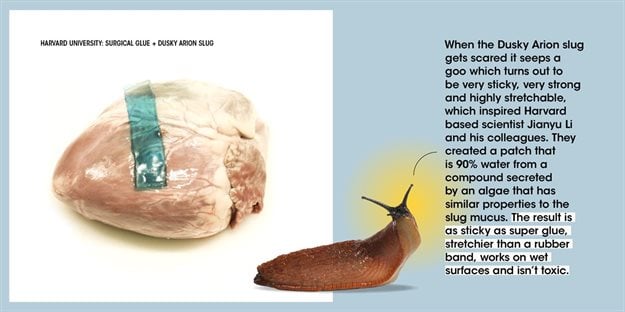





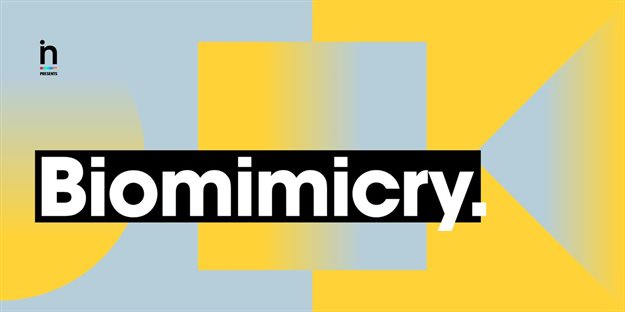
Quote:
“We always learn about nature, but we are rarely taught to learn from nature.” – Jess Berliner
Biomimicry encompasses so many different fields of design, manufacture and communication, that it can’t be pinned down to just ‘design’. To understand it, it is essential to look at the way of thinking that inspires the thought process.
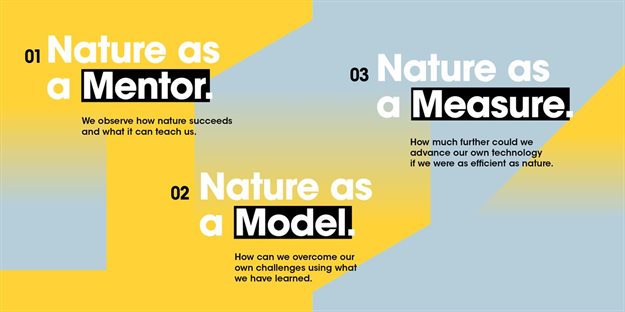
Travel or physical movement, especially flight, lends itself most obviously to biomimetic design. From Icarus to Leonardo da Vinci to the Wright Brothers, creatures that fly have inspired biomimetic design. A fascinating aspect to biomimicry is the translation across disciplines, size and substance. For instance, a Manta Ray inspiring plane design, a kingfisher providing solutions for air compression technologies on the Bullet Train in the 90s, or even squirrel-suited daredevils throwing themselves off cliffs, buildings and other really high places.
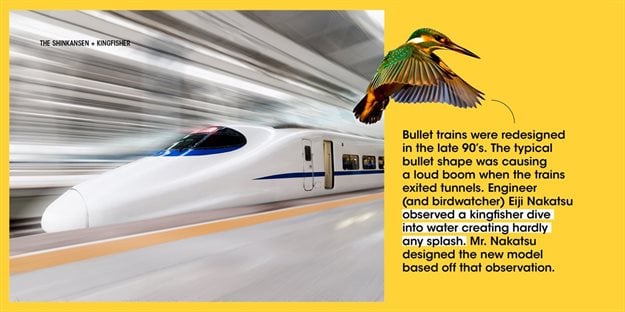
“The camping tent project was literally based on biomimicry. The objective was to create a tent that would blend nicely into the natural environment. Therefore, the design concept is inspired by the tree branch structure which has been giving mankind natural shelter and a place for relaxation since ancient times. Thanks to this, the user of the tent becomes a part of nature again. The principle of the branch inspired structure offers interesting functional and aesthetic solutions.”

Certified biomimicry professional Gamelihle Sibande gives us some clarity on how he views his educational responsibilities. His goal is to influence people to change their design solutions from Brown (business as usual), through Green (less carbon footprint) through Sustainability (doing no harm), through Restorative (repairing the damage done in the past) to Regenerative (replenishing resources at a rate faster than they are being depleted).
The latter is the holy grail of biomimetic design – actually switching from being destructive to being a regenerative force as a part of the environment.
There are thousands of examples of biomimicry impacting everything from travel, architecture, sport, textiles and health. Researchers have created a needle, based on the mouthparts of a mosquito. The structure of London’s ‘Gherkin’ tower is inspired by the skeleton of the Sea Sponge, affecting not only the aesthetics but the engineering of the product itself. Even swimmers felt the impact when the textiles based on the skin of a shark were so successful in increasing performance, they were banned!
When we look at these designs, it all appears so obvious that this is the way forward: Design that embraces nature’s lessons, helps humanity and does so without negatively impacting the natural world. You may have spent a lifetime studying design but, as Gamelihle Sibanda says, those in biomimetics have “3.8 billion years of R&D” at their fingertips.
Below are some examples of the coolest biomimetic design we’ve seen.
